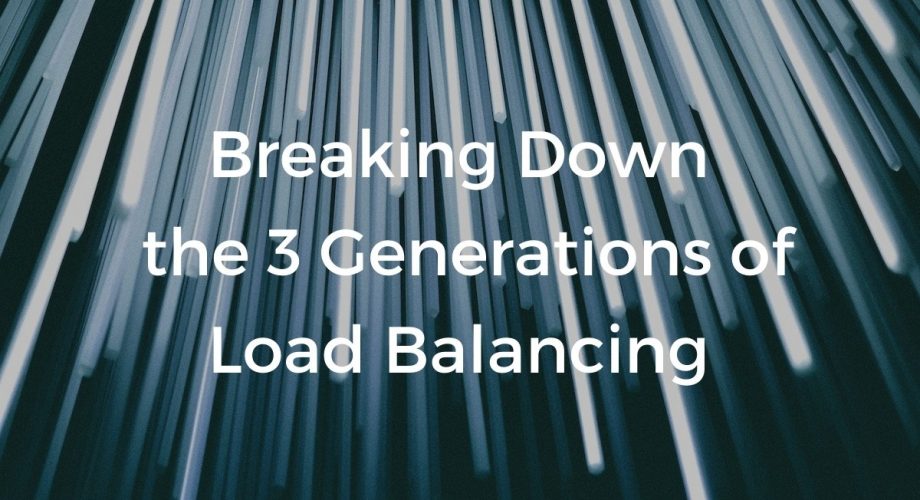Network management is a specialized niche of IT, and load balancing software is even more so. What makes this field fascinating to IT experts is the professional challenge of keeping up with developments.
Load balancing needs a deep understanding of how networks function, coupled with the knowledge of translating that into practical applications. No matter what type of work you have within IT, it helps to know about load balancing.
In the past, app developers and network engineers did not have to be knowledgeable about each other’s work. Today, load balancers bring these two roles together, and developments in this sphere lead to further integration. Let us explore how this field grew to be a vital aspect of our connected world.
The First Generation – 1996 to 2004
In its first form, load balancing was purely about connection-based traffic management. Virtual machines and cloud computing were virtually unheard of in the mainstream, and applications and servers were in the same infrastructure.
Eventually, the dot-com years of the early 2000s happened, ushering a golden era for tech companies. At this time, companies realized that applications needed to scale and provide more features to users. In turn, this required higher performance out of servers.
In this era, load balancing was dominated by hardware appliances.
The Second Generation – 2004 to 2012
When virtualization became the norm in IT, it brought changes to network management. Server load balancing software connects clients and applications in an infrastructure.
Notably, applications and servers can be separated from each other, allowing for more complex networks. Second-generation load balancers can determine workloads per geographical location and transfer IP or database requests to less burdened sites.
The second-generation of load balancing was dominated by products that worked well with virtual environments.
The Third Generation – 2012 to the Present
Today, applications run on hybrid and multi-cloud environments, offering greater scalability and security to enterprises. In 2012, cloud computing significantly changed load balancing, even more than virtual machines did. The third generation of balancers had to cope with these changes.
Network providers today must provide global server load balancing to facilitate the rapid exchange of information that happens worldwide, 24/7. Think of third-generation balancers as a software-defined fabric spanning data centers and clouds.
At its core, the balancer has a centralized controller providing administrators the ability to configure the system and deliver applications, set up firewalls and other security measures, and perform systems checks for the entire area.
The latest load balancers can also make routing decisions at a whole other level. They can read the characteristics of the HTTP/HTTPS header, the URL, the message’s content, and cookies.
Wrapping Up – The Future of Load Balancing
Cloud computing characterizes the next phase of network management. People are always on their mobile devices and exchanging gigabytes of information every single day. Digital businesses need protection online; they risk so much when dealing with clients and contractors over networks spanning the globe. Load balancing is only growing in importance, meaning that if you aren’t paying attention to it now, you should be.
Load Balancing Solutions
Enterprises rely on efficient data centers to succeed. We help you achieve that at Resonate—our software load balancing solutions give your company a competitive edge, make you productive, and protect you from ever-evolving threats online. Get in touch with us today for more information.

